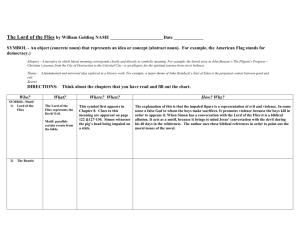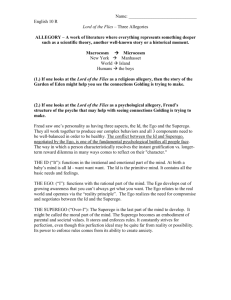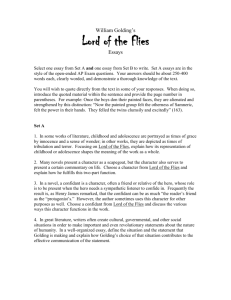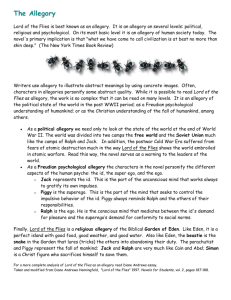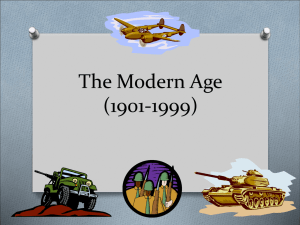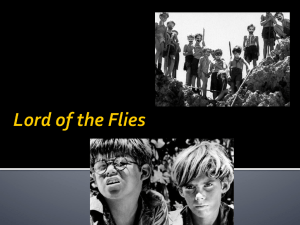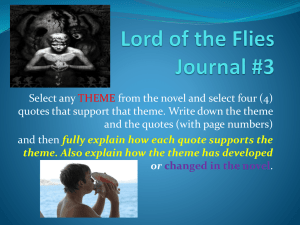Allegory Handout
advertisement
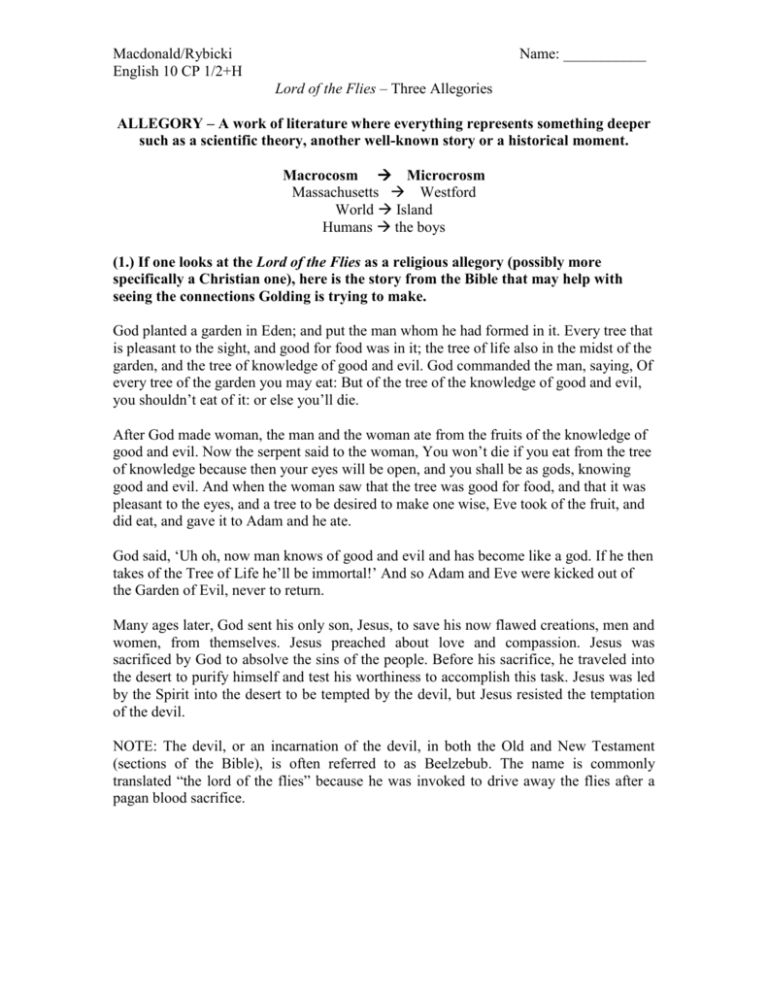
Macdonald/Rybicki English 10 CP 1/2+H Name: ___________ Lord of the Flies – Three Allegories ALLEGORY – A work of literature where everything represents something deeper such as a scientific theory, another well-known story or a historical moment. Macrocosm Microcrosm Massachusetts Westford World Island Humans the boys (1.) If one looks at the Lord of the Flies as a religious allegory (possibly more specifically a Christian one), here is the story from the Bible that may help with seeing the connections Golding is trying to make. God planted a garden in Eden; and put the man whom he had formed in it. Every tree that is pleasant to the sight, and good for food was in it; the tree of life also in the midst of the garden, and the tree of knowledge of good and evil. God commanded the man, saying, Of every tree of the garden you may eat: But of the tree of the knowledge of good and evil, you shouldn’t eat of it: or else you’ll die. After God made woman, the man and the woman ate from the fruits of the knowledge of good and evil. Now the serpent said to the woman, You won’t die if you eat from the tree of knowledge because then your eyes will be open, and you shall be as gods, knowing good and evil. And when the woman saw that the tree was good for food, and that it was pleasant to the eyes, and a tree to be desired to make one wise, Eve took of the fruit, and did eat, and gave it to Adam and he ate. God said, ‘Uh oh, now man knows of good and evil and has become like a god. If he then takes of the Tree of Life he’ll be immortal!’ And so Adam and Eve were kicked out of the Garden of Evil, never to return. Many ages later, God sent his only son, Jesus, to save his now flawed creations, men and women, from themselves. Jesus preached about love and compassion. Jesus was sacrificed by God to absolve the sins of the people. Before his sacrifice, he traveled into the desert to purify himself and test his worthiness to accomplish this task. Jesus was led by the Spirit into the desert to be tempted by the devil, but Jesus resisted the temptation of the devil. NOTE: The devil, or an incarnation of the devil, in both the Old and New Testament (sections of the Bible), is often referred to as Beelzebub. The name is commonly translated “the lord of the flies” because he was invoked to drive away the flies after a pagan blood sacrifice. (2.) If one looks at the Lord of the Flies as a psychological allegory, here is Freud’s structure of the psyche that may help with seeing connections Golding is trying to make. Freud came to see personality as having three aspects, which work together to produce all of our complex behaviors: the Id, the Ego and the Superego. All 3 components need to be well-balanced in order to be healthy. The conflict between the Id and Superego, negotiated by the Ego, is one of the fundamental psychological battles all people face. The way in which a person characteristically resolves the instant gratification vs. longerterm reward dilemma in many ways comes to reflect on their "character." THE ID (“It”): functions in the irrational and emotional part of the mind. At birth a baby’s mind is all Id - want want want. The Id is the primitive mind. It contains all the basic needs and feelings. THE EGO: (“I”): functions with the rational part of the mind. The Ego develops out of growing awareness that you can’t always get what you want. The Ego relates to the real world and operates via the “reality principle”. The Ego realizes the need for compromise and negotiates between the Id and the Superego. THE SUPEREGO (“Over-I”): The Superego is the last part of the mind to develop. It might be called the moral part of the mind. The Superego becomes an embodiment of parental and societal values. It stores and enforces rules. It constantly strives for perfection, even though this perfection ideal may be quite far from reality or possibility. Its power to enforce rules comes from its ability to create anxiety. (3.) If one looks at the Lord of the Flies as a political allegory, here is a quick history lesson that may help with seeing connections Golding is trying to make. As a political allegory, each character in Lord of the Flies represents some abstract idea of government. Ralph, for example, stands for the goodhearted but not entirely effective leader of a democratic state, a ruler who wants to rule by law derived from the common consent. Piggy is his adviser, someone who is unable to rule because of his own social and physical shortcomings, but who is able to offer sound advice to the democratic leader. Jack, on the other hand, represents a totalitarian dictator, a ruler who appeals to the emotional responses of his followers. He rules by charisma and hysteria. Roger, the boy who takes the most joy in the slaughter of the pigs and hurts other boys represents the henchman necessary for such a totalitarian ruler to stay in power. Such a reading takes into account the state of the world at the end of the World War II. For many years, leaders such as British Prime Minister Winston Churchill and U.S. President Franklin D. Roosevelt led democratic countries against totalitarian demigods such as Germany's Adolf Hitler and Italy's Benito Mussolini. Further, in the early 1950s, the world appeared to be divided into two camps: the so-called Free World of Western Europe and the United States, and the so-called Iron Curtain world of communist eastern Europe and the Soviet Union. At the time of the writing of Lord of the Flies, the world appeared to be teetering on the brink of total nuclear annihilation. Thus, by taking into account the historical context of Lord of the Flies, it is possible to understand the work as political and historical allegory, even as a cautionary tale for the leaders of the world.
